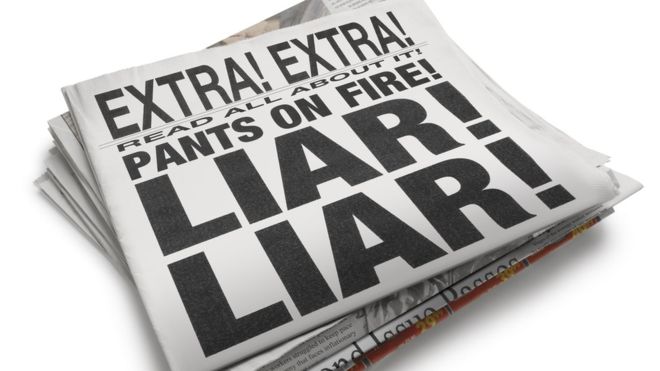BURLINGTON, Vt. – Vermont students are learning CRAAP – a “media literacy” program that’s designed to help them discern real news from fake news.
CRAAP stands for Currency, Relevance, Authority, Accuracy, and Purpose. Burlington High School librarian Shannon Walters contends students can’t tell fake news from the real thing, and the CRAAP system prods them with questions to ensure they’re digging deeper than what meets the eye, the Burlington Free Press reports.
MORE NEWS: Know These Before Moving From Cyprus To The UK
“We have to introduce these ideas to kids before they think they know everything,” Walters said. “It used to be that we had to gather from a scarcity of resources. Now we have to help our students and our faculty navigate an overflow of information to determine what’s the best resource to meet their needs.”
Fake news gained notoriety during the 2016 presidential campaign when U.S. intelligence officials accused the Russian government of employing hackers to distribute misleading information in an attempt to influence the outcome.
A 2016 Stanford University study of 7,000 students in middle school through college found most students can’t tell the difference between ads and news stories, and are easily duped by Photoshopped images.
According to the Free Press:
“[…] in every case and at every level, we were taken aback by students’ lack of preparation,” the Stanford study stated. …
More than 80% of middle school students thought that “sponsored content,” was a real news story. Fewer than 20% of students questioned the source of a photo post containing a false report of mutated flowers from a nuclear power plant failure.
The CRAAP program challenges students to question what they find online through a series of questions that are allegedly designed to vet the author, publisher, and internet source of news and other online information.
Students are asked to think about questions like:
Who is the author/publisher/source/sponsor?
MORE NEWS: How to prepare for face-to-face classes
What are the author’s credentials or organizational affiliations?
What are the author’s qualifications to write on the topic?
Is there contact information, such as a publisher or email address?
Does the URL reveal anything about the author or source?
Essentially, “the people who bring you declining educational results despite increased spending now want to teach our children their version of how to interpret content on the internet,” Accuracy in Media reports.
Of course, teachers unions that represent educators overwhelming favor Democratic polices and politicians, and are constantly looking for new ways to influence students to adopt a liberal perspective on everything from gay rights and religion to gun rights and education funding.
The brazen irony of the situation is mind-blowing.
As renowned education reform advocate and former teacher Larry Sand put it when the union distributed its own take on fake news in January:
Weighing in on “fake news,” the National Education Association’s website asks and answers a question, “Who Stands Between Fake News and Students? Educators.” But NEA giving a lesson in fake news is like Hillary Clinton teaching a class on ethics. So much of what the union disseminates is fake news, which it hopes will be utilized by uncritically-thinking teachers to indoctrinate their impressionable students.
Sand highlighted the lies spread by unionized teachers at rallies during the 2016 election, which attempted to link Trump to “union busting,” Walmart, public school privatization, and other negative issues.
Many teachers have also been busted distributing their own fake news, including a Los Angeles teacher who allegedly told students “Trump and Hitler are one in the same,” an educator in North Carolina who claimed “the only people who seem to be safe from (Trump) are … white Christian male Americans,” and others, Sand wrote.
Lesson plans distributed to teachers in San Francisco also offered skewed perspective on the 2016 election, as well as advice for teachers – “DO NOT: Tell them that we have LOST and that we have to accept this,” it read.
Perhaps not surprising, the effort by teachers unions and others to influence what students perceive as fake news doesn’t include the countless examples of truly fake news distributed by “real news” sites like CNN, The Washington Post, The New York Times and others, despite repeated distortions and outright lies.
Those sources, much like the union promoters of “media literacy” and the folks at Facebook, Google, and other sites that have vowed to pre-empt the proliferation of “fake news,” are also wildly liberal.
And maybe that’s the point.
“We want students to come to conclusions that are not only true but personally meaningful and relevant,” Walters told the Free Press.


Join the Discussion
Comments are currently closed.